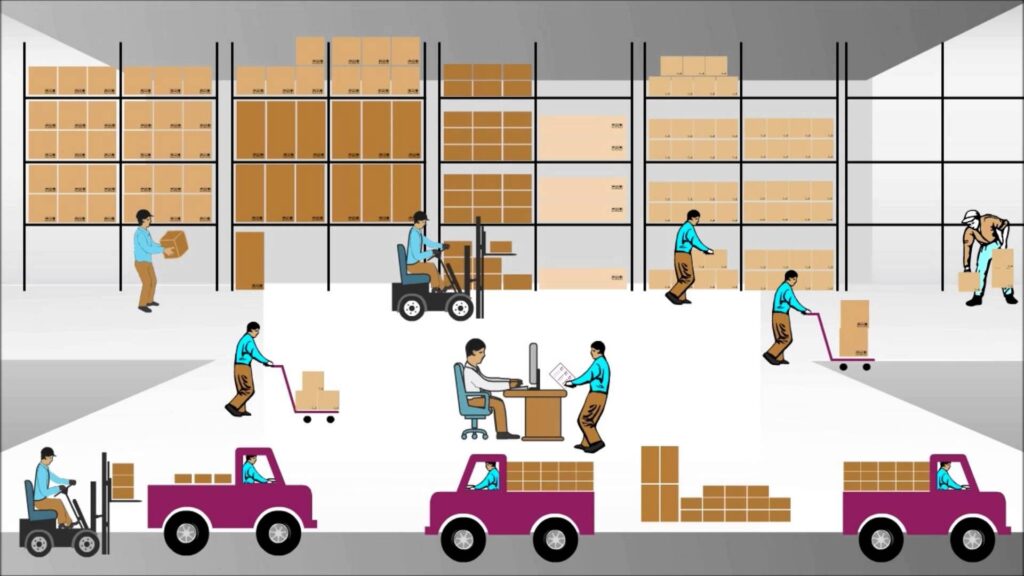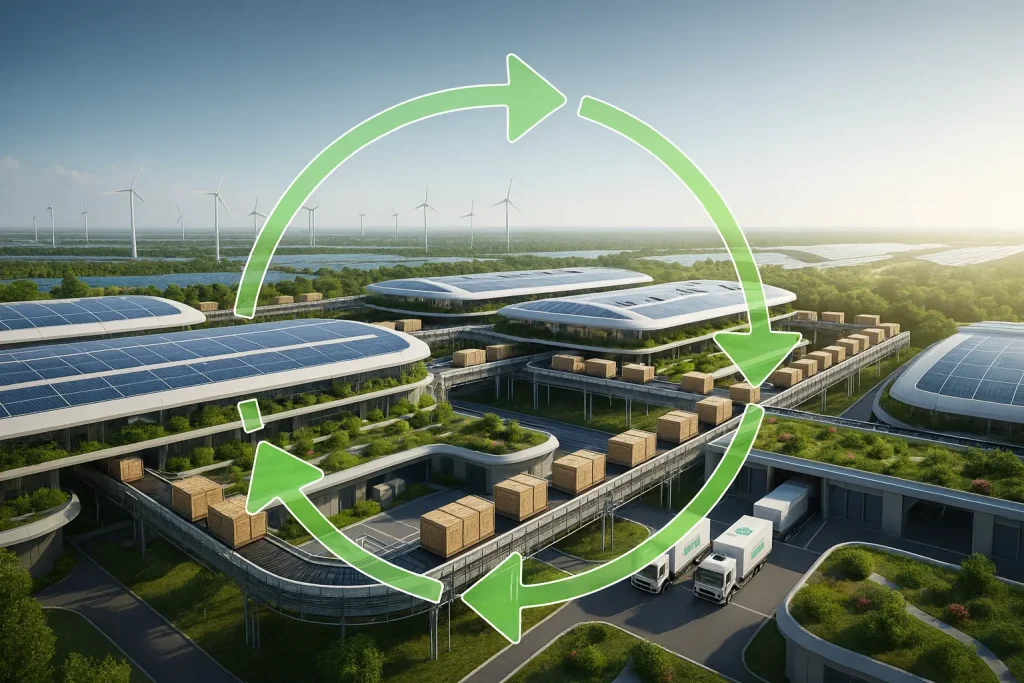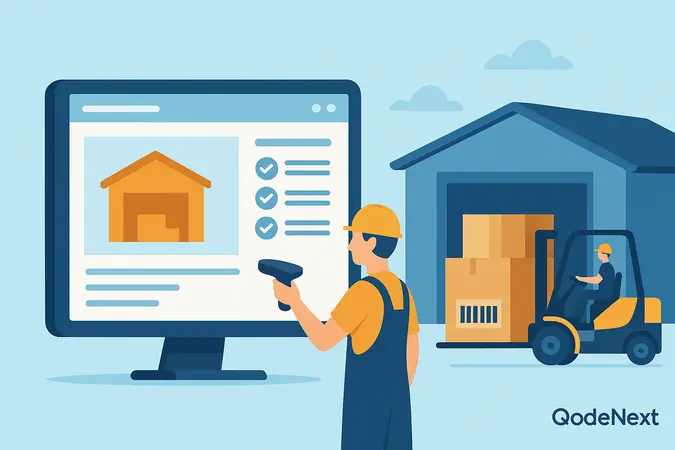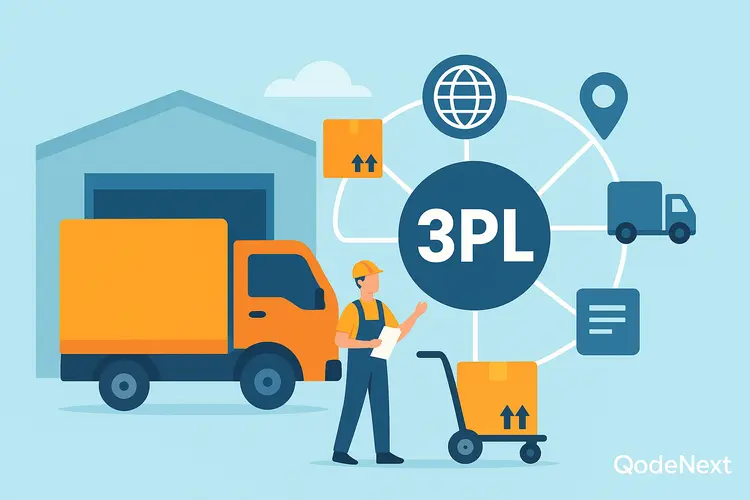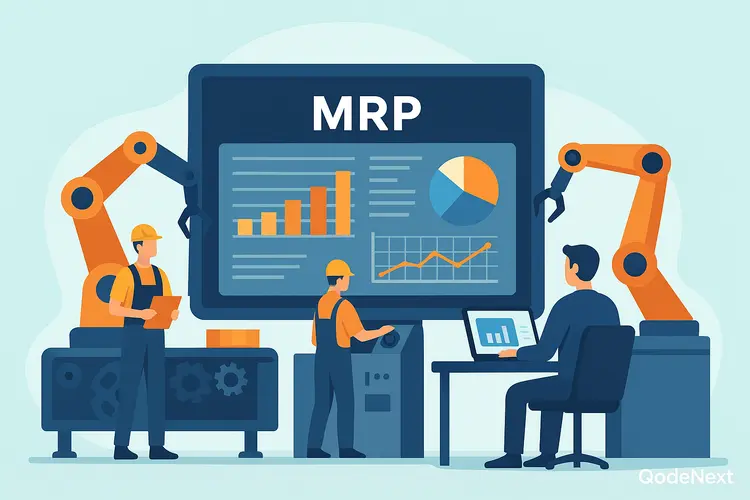The logistics industry is an ever-evolving and highly competitive space. As the world becomes increasingly digital, businesses are turning to technology to optimise their supply chain operations. One such technology is the integration of a Warehouse Management System (WMS) with a Transportation Management System (TMS). This integration is the backbone of a seamless and efficient supply chain operation.
According to a report by India Brand Equity Foundation, the Indian logistics market reached $215 billion in 2020, with an estimated annual growth rate of 10.5%. With this growth, the need for optimised supply chain operations becomes even more critical. In this blog, we will explore the interactions between WMS and TMS, their differences, and how their integration can lead to a seamless supply chain operation.

Understanding the Role of a Transportation Management System
A Transportation Management System (TMS) is an essential tool for businesses that need to manage and optimize their transportation operations. The primary objectives of a Transport Management System are to reduce transportation costs, optimize carrier selection, improve delivery times, and enhance customer satisfaction.
Wondering how a transportation management system works? It uses various algorithms to optimize transportation operations. The system considers multiple factors, such as the cost of transportation, carrier capacity, transit times, and customer delivery requirements, to determine the best transportation plan. Once a plan is determined, the TMS provides real-time visibility into the shipment status, allowing businesses to monitor and track their shipments.
Understanding the Role of a Warehouse Management System
A Warehouse Management System (WMS) is a software application designed to manage and optimize warehouse operations. The primary objective of a WMS is to improve inventory accuracy, optimize order fulfilment, reduce labor costs, and enhance customer satisfaction.
To achieve these objectives, a WMS uses various algorithms to optimize warehouse operations. The system considers multiple factors, such as inventory levels, order volume, and order fulfilment requirements, to determine the best warehouse plan. a plan is determined, the WMS provides real-time visibility into the inventory status, allowing businesses to monitor and track their inventory levels.
Synergizing WMS and TMS: 7 Ways to Optimise Supply Chain Operations
In today’s highly competitive market, efficient supply chain management has become a necessity. Effective supply chain management requires a streamlined approach where every element is synchronised and optimised for maximum efficiency. A Warehouse Management System (WMS) and a Transportation Management System (TMS) are two essential components of a successful supply chain operation. Although they function independently, the integration of WMS and TMS can lead to significant improvements in supply chain management.
Now, let’s discuss the ways in which WMS and TMS can interact with each other for a seamless supply chain operation.
1. End-to-End Order Tracking
One of the primary ways in which WMS and TMS can integrate with each other is through end-to-end order tracking. This means that the TMS and WMS systems communicate with each other to provide real-time tracking of orders from the warehouse to the customer’s doorstep.
This integration enables logistics teams to monitor orders at every stage of the delivery process, from picking and packing to transportation and delivery. By tracking orders in real-time, companies can improve their delivery time and customer satisfaction.
For instance, in India, the food delivery company Zomato has implemented end-to-end tracking of their orders using a combination of WMS and TMS. The integration of these systems enables Zomato to track orders from the time they are placed until they are delivered to the customer. This helps the company to provide real-time updates to customers about their order status and estimated delivery time.
2. Breaking Down Data Silos
Another critical way in which WMS and TMS can integrate is by breaking down data silos. Traditionally, WMS and TMS systems have been used independently, resulting in separate data silos. This creates a gap in data sharing, which hinders efficient supply chain management.
However, by integrating WMS and TMS, companies can break down these data silos and provide a unified platform for data sharing. This enables logistics teams to access real-time data from both systems and gain valuable insights into the supply chain. By analyzing this data, companies can optimize their supply chain processes, reduce costs, and improve delivery times.
A notable example of this is the Indian e-commerce giant Flipkart. Flipkart has integrated its WMS and TMS systems to provide a unified platform for data sharing. This integration enables Flipkart to gain real-time insights into its supply chain operations, optimize its inventory management, and reduce costs.
3. Visibility, Digitization, Control Towers, and the Single Pane of Glass
The integration of WMS and TMS can provide visibility, digitization, control towers, and a single pane of glass for logistics teams. By integrating these systems, companies can provide real-time visibility into their supply chain operations. This enables logistics teams to monitor their inventory levels, track orders in real time, and gain valuable insights into the supply chain.
Moreover, by digitizing their supply chain operations, companies can reduce paperwork and improve the accuracy of their data. This results in a more efficient supply chain, with fewer errors and delays.
Additionally, control towers enable logistics teams to have a centralized platform for monitoring and managing their supply chain. By integrating WMS and TMS into a control tower, companies can gain real-time insights into their supply chain and make data-driven decisions.
For example, the Indian logistics company Mahindra Logistics has implemented an integrated WMS and TMS system. This integration provides real-time visibility into the supply chain, enabling logistics teams to monitor inventory levels, track orders in real time, and gain valuable insights into the supply chain.
4. Automated Inventory Management
By integrating the two systems, companies can automate the inventory management process, resulting in increased accuracy and reduced human error. This ensures that the right products are available at the right time, preventing stockouts and excess inventory.
For example, in the case of Walmart, they have implemented a WMS and TMS integration to optimize inventory management, reducing inventory levels by 13% while improving product availability.
5. Optimization of Transportation Costs
By integrating TMS and WMS, companies can optimize their transportation costs. This is achieved by using the data from the WMS to identify the most efficient and cost-effective shipping routes, carriers, and modes of transportation.
For instance, Coca-Cola, the beverage giant, implemented an integration of their TMS and WMS systems to optimize their transportation network. The integration helped them save over $10 million annually by optimizing their truckload transportation.
6. Improved Warehouse Efficiency
Integrating WMS and TMS can also help in improving warehouse efficiency by automating various warehouse processes. This includes automating the process of receiving, put-away, picking, and shipping.
For example, in the case of Amazon, they implemented an integrated WMS and TMS solution to improve warehouse efficiency, reducing the time taken to process an order from hours to just a few minutes.
7. Real-time Analytics and Reporting
Integrating TMS and WMS can provide real-time analytics and reporting capabilities, helping companies make better decisions. This includes monitoring inventory levels, delivery times, and shipment statuses in real time.
For example, the Indian e-commerce giant Flipkart has implemented an integrated WMS and TMS solution to track their shipments in real time, ensuring that their products are delivered on time.
Optimizing the Supply Chain Through WMS–TMS Synergy
Integrating a Warehouse Management System (WMS) with a Transportation Management System (TMS) can be a game changer for businesses. This integration can provide a wide range of benefits that can help companies achieve their goals and outpace their competition. Here, we’ll discuss the key benefits of integrating WMS with TMS and how it can boost your supply chain operations.
1. Cost Reduction
When businesses integrate their WMS with TMS, they can optimise their carrier selection based on factors such as cost, delivery times, and location. This helps reduce transportation costs, resulting in significant savings. By leveraging the right transportation mix, businesses can lower their costs and improve their bottom line.
Furthermore, the integration of WMS with TMS also reduces labour costs by automating and streamlining warehouse and transportation operations. This automation minimises human errors and reduces the need for manual labour, which helps lower overall costs.
2. Improved Efficiency
By integrating WMS with TMS, businesses can automate warehouse and transportation operations, resulting in improved efficiency. This automation helps reduce lead times, enhance customer satisfaction, and minimise errors. In turn, businesses can provide better service to their customers, helping to increase loyalty and drive revenue.
3. Real-time Visibility
One of the most significant benefits of integrating WMS with TMS is real-time visibility. This integration allows businesses to track inventory levels and shipment status in real time, enabling them to quickly respond to any changes in their operations. This real-time visibility also helps improve communication with customers, allowing them to track their shipments and stay informed about delivery times.
4. Optimization of Operations:
Integrating WMS with TMS can help optimise warehouse and transportation operations, leading to better use of resources and increased productivity. By automating processes, businesses can free up their staff to focus on more critical tasks, leading to a more efficient and productive workforce.
5. Improved Accuracy
Integrating WMS with TMS can improve inventory accuracy, order accuracy, and delivery accuracy. This accuracy helps reduce the likelihood of errors and increases customer satisfaction. Additionally, businesses can use this data to make better decisions about inventory management, improving their overall operations.
6. Scalability
As businesses grow, their supply chain needs to change. Integrating WMS with TMS allows businesses to scale their operations to meet the demands of their customers. This scalability is essential for businesses that want to grow their customer base and compete in today’s marketplace.
7. Data-driven Decision Making
By providing real-time visibility into inventory levels and shipment status, businesses can make data-driven decisions. These decisions can lead to improved operations and reduced costs. By leveraging data, businesses can optimise their supply chain, identify areas for improvement, and implement changes that lead to better outcomes.
Conclusion
As the world becomes more connected and businesses continue to expand their operations, the need for efficient supply chain management has never been more important. The integration of a Warehouse Management System with a Transportation Management System is a vital step towards achieving this goal.
By combining the capabilities of both systems, businesses can optimise their operations, reduce costs, and improve customer satisfaction. Real-time visibility into inventory levels and shipment status allows for proactive management and data-driven decision-making, ensuring that businesses are always operating at peak efficiency.
As a leading provider of supply chain management solutions, QodeNext understands the importance of integrated WMS and TMS solutions. Their platform provides businesses with a comprehensive solution that streamlines operations, scales with their growth, and allows for proactive management of the supply chain.
Don’t let outdated and disconnected systems hold your business back. Contact QodeNext today to learn how their integrated WMS and TMS platform can revolutionise your supply chain operations and take your business to the next level!
FAQ: Transportation Management System
1. How long does it take to integrate WMS and TMS systems?
The time it takes to integrate WMS and TMS systems depends on various factors, including the complexity of the systems, the amount of data to be migrated, and the level of customization required. Typically, successful integration can take anywhere from a few weeks to several months.
2. What are some common challenges businesses face when integrating WMS and TMS systems?
Common challenges businesses face when integrating WMS and TMS systems include data mapping and integration, system compatibility issues, and staff training. These challenges can be overcome by working with an experienced provider that specialises in WMS and TMS integration.
3. How can businesses measure the success of their WMS and TMS integration?
Businesses can measure the success of their WMS and TMS integration by monitoring key performance indicators (KPIs) such as inventory accuracy, order cycle time, and delivery time. By regularly monitoring these KPIs, businesses can make data-driven decisions to improve their operations and ensure the success of their integration.
4. How long does it take to implement a TMS system?
The time required to implement a TMS system can vary depending on the complexity of the business operations. However, with the right implementation partner, businesses can achieve a smooth and quick implementation process.
5. What is the role of cloud-based systems in the integration of WMS and TMS?
Cloud-based systems play a critical role in the integration of WMS and TMS as they allow for real-time data sharing and collaboration between the two systems. Cloud-based systems also provide businesses with scalability and flexibility, allowing them to easily expand their operations as needed.
6. What are the key benefits of integrating WMS with TMS?
Integration streamlines supply chain operations by providing end-to-end visibility, automating inventory management, optimizing transportation costs, improving warehouse efficiency, and enabling real-time analytics for data-driven decision-making.
7. How does WMS and TMS integration improve order tracking?
The systems communicate to offer real-time tracking from warehouse picking and packing to final delivery, ensuring companies and customers have accurate, up-to-date information on order status.
8. What challenges might businesses face when integrating WMS and TMS?
Common challenges include data compatibility, mapping issues, system customization needs, staff training, and ensuring seamless communication between disparate software platforms.
9. Can WMS and TMS integration lead to cost savings?
Yes, by optimizing carrier selection and transportation routes based on warehouse inventory data and automating processes to reduce labor and errors, significant transportation and operational cost reductions can be achieved.
10. How does integration enhance warehouse efficiency?
Automation of tasks such as receiving, put-away, picking, and shipping reduces processing times and errors, enabling faster order fulfillment and improved resource utilization.
